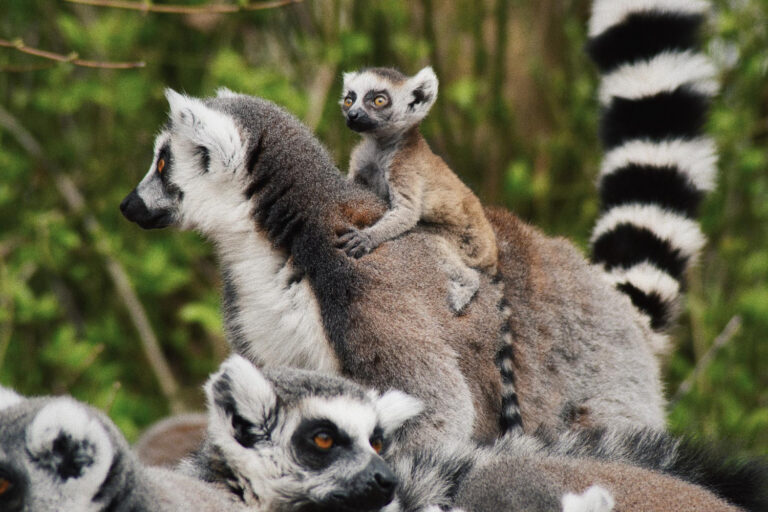Unique to Madagascar
Lemurs are found nowhere else in the world! Madagascar is their only natural habitat, making them truly unique to the island.
A Wide Variety
There are over 100 different species of lemurs, ranging from the tiny mouse lemur (the smallest primate in the world) to the larger Indri, which can weigh up to 21 pounds.
Great Leapers
Lemurs are known for their incredible jumping abilities. Some, like the sifaka, can leap over 30 feet between trees, using their strong hind legs and long tails for balance.
Super Social
Many lemur species live in social groups called “troops.” These troops can range from a few individuals to over 30, and the females are often the leaders!
Sunbathing Rituals
Some lemurs, like the ring-tailed lemur, love to sunbathe. They sit upright with their arms stretched out, soaking up the morning sun to warm themselves after a cool night.
Unique Communication
Lemurs have a variety of vocalizations, from the Indri’s haunting, whale-like calls to the ring-tailed lemur’s cat-like purring and meowing.
Pollinators of the Night
Some lemurs, like the black and white ruffed lemur, play a crucial role in pollination. When they feed on nectar, their faces get covered in pollen, which they then spread as they move from flower to flower.
Flexible Diets
Lemurs have diverse diets, ranging from fruits, leaves, and flowers to insects. The aye-aye, one of the strangest lemurs, uses its long, thin middle finger to tap on tree bark, locate grubs, and scoop them out to eat.
Nocturnal Adaptations
Many lemurs are nocturnal, which means they are most active at night. Species like the mouse lemur have large, reflective eyes to help them see in low light conditions.
Dancing Lemurs
Sifakas are often called “dancing lemurs” because of their unique way of moving. When on the ground, they hop sideways with their arms held up, resembling a dance move!
